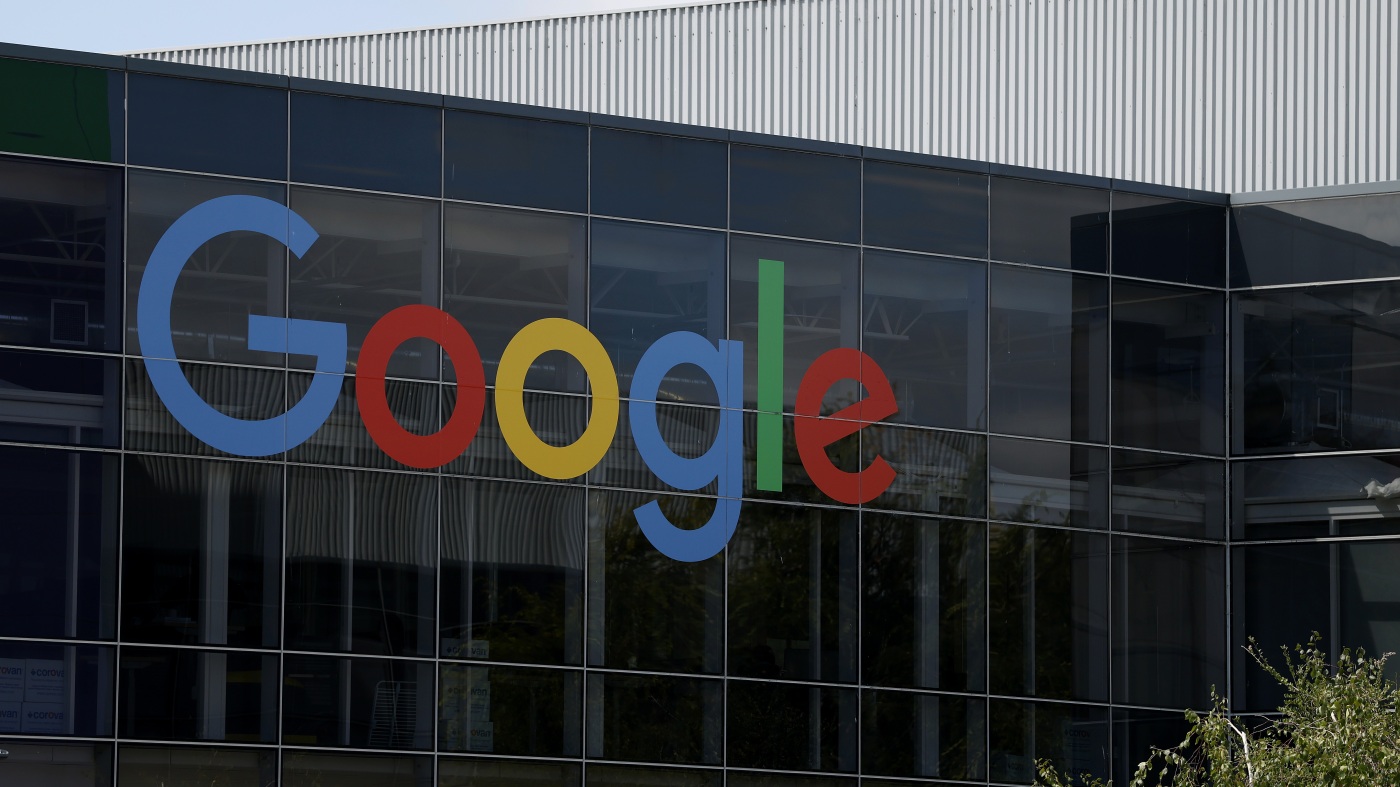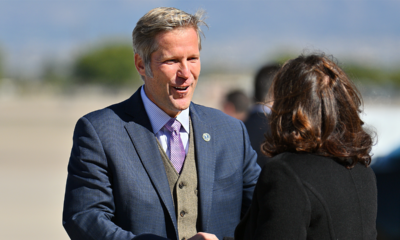Health
Heart attacks more likely during presidential elections and other stressful times, study shows

Your genes could put you at a higher risk of heart attack during very stressful times.
Research from Massachusetts General Hospital found that people who have specific genetic traits, paired with anxiety or depression, are at a “significantly higher heart attack risk” during periods of social or political stress, such as presidential elections, winter holidays or even the Super Bowl.
The study, presented at the American College of Cardiology’s annual scientific session in April, was the first to examine stress sensitivity based on genetics as a driver of acute coronary syndromes (ACS).
CHICAGO NURSE IS FINALLY FREE OF COVID-19-RELATED PTSD AND DEPRESSION AFTER ELECTRICAL BRAIN TAPPING THERAPY
These syndromes include heart attacks and other “serious conditions where the heart is suddenly deprived of blood supply,” a press release noted.
Of 18,428 Mass General Brigham Biobank participants, 1,890 developed ACS between 2000 and 2020.
People with high stress sensitivity, anxiety or depression are at a “significantly higher heart attack risk” during periods of social or political stress, the study found. (Lorenzo Bevilaqua/ABC via Getty Images; iStock)
The researchers measured the participants’ stress sensitivity by measuring their neuroticism polygenic risk score (nPRS).
Stressful periods — including five days after presidential elections and 10 days surrounding Christmas Day — made up 3.2% of the observed timeline.
A total of 71 ACS cases took place during stressful periods, compared to 1,819 during control periods.
AMERICANS NEED MORE SLEEP, LESS STRESS, EXPERTS SAY, AS GALLUP POLL REVEALS TROUBLING FINDINGS
People with high genetic stress sensitivity had a 36% higher risk of ACS, the researchers found.
Those with high genetic stress who also developed anxiety or depression had three times the risk.
People with above median nPRS, or high genetic stress sensitivity, had a 36% higher risk of ACS, a new study found. (iStock)
“High nPRS, indicating elevated genetic susceptibility to stress, mediates ACS risk during periods of socio-political stress,” the study authors wrote as a conclusion. “A multifaceted approach to [cardiovascular disease] prevention may benefit.”
In an interview with Fox News Digital, lead study author Shady Abohashem, M.D., instructor of cardiovascular imaging at Massachusetts General Hospital and Harvard Medical School, said that while the numbers are “striking,” the results overall are not surprising, since anxiety and depression alone have been associated with a substantial risk for heart attack regardless of genetics.
ANGER CAN INCREASE HEART ATTACK RISK, STUDY FINDS: ‘CHRONIC INSULT TO ARTERIES’
“So, if you have both conditions, you would expect to have a substantial increase in your risk,” he said.
Through scientific analysis, Abohashem and his fellow researchers found that about 25% of ACS cases were due to anxiety and depression.
About a quarter of ACS developments in this study were due to anxiety and depression, the researcher told Fox News Digital. (iStock)
The impact of genetic susceptibility on heart attack risk could be an important factor for cardiologists and general care physicians to consider, Abohashem said.
He suggested implementing these screenings into cardiovascular risk assessments to help identify those people at most risk.
“The mind-heart connection is strong, and this study highlights that not only our bodies, but also our minds, need rest and care.”
“Based on that identification, we could develop targeted intervention, or maybe preventive strategies, that could help us protect those people from developing heart attacks in the future,” he added.
HEART HEALTH RISK FACTORS FOR WOMEN OVER AGE 50
The researchers are currently working on a study to discover how lifestyle modifications can benefit people with a high genetic risk for stress.
As 2024 is an election year, Abohashem advised Americans to manage stress through effective outlets like exercise or yoga.
Shady Abohashem, M.D., instructor of cardiovascular imaging at Massachusetts General Hospital and Harvard Medical School, was the lead author of the new study and shared insights with Fox News Digital. (ACC (American College of Cardiology))
Dr. Laxmi Mehta, an American Heart Association medical expert and cardiology director at The Ohio State University, commented on the study in a statement sent to Fox News Digital.
“This is an interesting study that further supports the data of the mind-heart connection,” said Mehta, who was not involved in the research. “It highlights the importance of mental health and its impact on overall health, including the heart.”
CLICK HERE TO SIGN UP FOR OUR HEALTH NEWSLETTER
Mehta did note that the “retrospective nature” of the study “limits the ability to show a direct causal relationship between mental health conditions” such as depression and anxiety.
The study “reinforces whole-person preventative care,” the cardiologist emphasized.
A doctor stressed the importance of a medical focus on the “mind-heart connection.” (iStock)
“The mind-heart connection is strong, and this study highlights that not only our bodies, but also our minds, need rest and care,” she said.
“The public needs to be aware of the impact social and political stress has on us, that it is OK to take a break from these stressors, and also that it is good to learn more about interventions like yoga, exercise and mindfulness.”
The expert encouraged doctors to advise their patients on the American Heart Association’s “Life’s Essential 8,” which are key measures to maintaining cardiovascular health.
These eight steps include eating better, being more active, quitting nicotine products, getting healthy sleep, managing weight, controlling cholesterol, managing blood sugar and maintaining healthy blood pressure.
For more Health articles, visit foxnews.com/health.

Health
Scientists pinpoint why COVID vaccine may trigger heart inflammation in certain people

NEWYou can now listen to Fox News articles!
POST-DOSE PATTERN — New research reveals why the COVID vaccine can trigger heart issues, especially in one group
PREVENTION PAYOFF — Simple lifestyle changes could slash heart attack risk for millions
A new study has identified why mRNA COVID-19 vaccines could trigger heart issues, especially in one demographic. (iStock)
SMOKE SCREEN — A major cannabis study finds little proof for popular medical claims and flags big dangers
HIDDEN LINK — A common dental health issue may hint at a dangerous cardiovascular condition
SIGN UP FOR OUR HEALTH NEWSLETTER
SCREENING DEBATE — A new study questions whether annual mammograms are necessary for most women
SUPER SPREAD — An “aggressive” new flu variant sweeps the globe as doctors warn of severe symptoms
The flu season has intensified as the new H3N2 variant causes severe illness worldwide. (iStock)
DANGEROUS DEFICIT — A nutrient deficiency has been linked to heart disease risk for millions
LIKE WHAT YOU’RE READING? CLICK HERE FOR MORE HEALTH NEWS
CORONARY CHRISTMAS — Holiday heart attacks spike as doctors share hidden triggers and prevention tips
Health
Aging-related joint disorder increasingly affects people under 40, study finds

NEWYou can now listen to Fox News articles!
Cases of gout are rising in younger individuals, according to a global study.
The condition, which is a type of inflammatory arthritis, steadily increased in people aged 15 to 39 between 1990 and 2021, researchers in China announced.
Although rates vary widely between countries, the total number of young people with the condition is expected to continue rising through 2035.
WEIGHT LOSS DRUGS COULD ADD YEARS TO AMERICANS’ LIVES, RESEARCHERS PROJECT
The study, published in the journal Joint Bone Spine, investigated 2021 data from the Global Burden of Disease (GBD), spanning 204 countries within the 30-year timeframe.
The data measured gout prevalence, incidence and years lived with disability, tracking global trends over time. The results showed a global increase across all three outcomes.
Gout is expected to continue rising in young people through 2035. (iStock)
Prevalence and disability years increased by 66%, and incidence rose by 62%. In 2021, 15- to 39-year-olds accounted for nearly 14% of new gout cases globally, the study found.
Men from 35 to 39 years old and people in high-income regions had the highest burden, but high-income North America topped the list for highest rates.
‘SKINNY FAT’ WARNING ISSUED AS STUDY FINDS HIDDEN OBESITY BEHIND NORMAL BMI
Men were also found to have lived more years with gout due to high BMI, while women tended to have the condition as a link to kidney dysfunction, the study noted.
The total number of cases is expected to increase globally due to population growth, but the study projected that rates per population would decrease.
The researchers noted that data quality, especially in low-income settings, could have posed a limitation to the broad GBD data.
What is gout?
Gout is a common form of arthritis involving sudden and severe attacks of pain, swelling, redness and tenderness in the joints, according to Mayo Clinic. It most often occurs in the big toe.
CLICK HERE FOR MORE HEALTH STORIES
The condition occurs when urate crystals accumulate in the joint. These form when there are high levels of uric acid in the blood, which the body produces when it breaks down a natural substance called purines.
A gout flare-up can happen at any time, often at night, causing the affected joint to feel hot, swollen, tender and sensitive to the touch.
Urate crystals, described as sharp and needle-like, build up in the joint, causing intense pain and swelling. (iStock)
Purines can also be found in certain foods, like red meat or organ meats like liver and some seafood, including anchovies, sardines, mussels, scallops, trout and tuna, according to the Mayo Clinic. Alcoholic drinks, especially beer, and drinks sweetened with fruit sugar can also lead to higher uric acid levels.
CLICK HERE TO SIGN UP FOR OUR HEALTH NEWSLETTER
Uric acid will typically dissolve in the blood and pass through the kidneys into urine, but when the body produces too much or too little uric acid, it can cause a build-up of urate crystals. These are described by the Mayo Clinic as sharp and needle-like, causing pain, inflammation and swelling in the joint or surrounding tissue.
Risk factors for gout include a diet rich in high-purine foods and being overweight, which causes the body to produce more uric acid and the kidneys to have trouble eliminating it.
Experts urge patients to seek medical attention for gout flare-ups. (iStock)
Certain conditions like untreated high blood pressure, diabetes, obesity, metabolic syndrome and heart and kidney diseases can increase the risk of gout, as well as certain medications.
A family history of gout can also increase risk. Men are more likely to develop the condition, as women tend to have lower uric acid levels, although symptoms generally develop after menopause.
CLICK HERE TO DOWNLOAD THE FOX NEWS APP
Untreated gout can cause worsening pain and joint damage, experts caution. It may also lead to more severe conditions, such as recurrent gout, advanced gout and kidney stones.
TEST YOURSELF WITH OUR LATEST LIFESTYLE QUIZ
The Mayo Clinic advises patients to seek immediate medical care if a fever occurs or if a joint becomes hot and inflamed, which is a sign of infection. Certain anti-inflammatory medications can help treat gout flares and complications.
Fox News Digital reached out to the researchers for comment.
Health
New study questions whether annual mammograms are necessary for most women

NEWYou can now listen to Fox News articles!
A new study suggests that annual mammograms may not be the only effective approach for preventing breast cancer.
The research, published in the Journal of the American Medical Association (JAMA), tested a risk-based breast cancer screening approach against standard annual mammography.
The WISDOM randomized clinical trial, led by study authors from universities and healthcare systems across the U.S., considered more than 28,000 women aged 40 to 74 years old, splitting them into a risk-based screening group and an annual mammography group.
ERIN ANDREWS HAD ‘NO SYMPTOMS’ BEFORE CANCER DIAGNOSIS, PUSHES FOR EARLY SCREENINGS
Researchers calculated each woman’s individual risk based on genetics (sequencing of nine breast cancer genes) and other health factors.
A new study suggests that annual mammograms may not be the only effective approach for preventing breast cancer. (iStock)
Those who were at the highest risk were advised to alternate between a mammogram and an MRI scan every six months. Patients with elevated risk were told to get an annual mammography and counseling.
Average-risk women were guided to get mammograms every two years, while low-risk individuals were advised to have no screening until they became higher risk or reached age 50.
HIDDEN TYPE OF BREAST CANCER COULD BE EXPOSED BY NEW BREAKTHROUGH TECH
The researchers found that risk-based screening did not lead to more advanced cancer diagnoses (stage 2B or higher) compared with annual screening, indicating that it is just as safe as traditional methods. The risk-based approach, however, did not reduce the number of biopsies overall, as researchers had hoped.
Among the risk-based group of women, those with higher risk had more screening, biopsies and detected cancers. Women at lower risk had fewer procedures.
The research, published in the Journal of the American Medical Association (JAMA), tested a risk-based breast cancer screening approach against standard annual mammography. (iStock)
“[The] findings suggest that risk-based breast cancer screening is a safe alternative to annual screening for women aged 40 to 74 years,” the researchers noted in the research summary. “Screening intensity matched individual risk, potentially reducing unnecessary imaging.”
CLICK HERE FOR MORE HEALTH STORIES
Fox News medical contributor Dr. Nicole Saphier, associate professor of radiology at Memorial Sloan Kettering Cancer Center in New Jersey, commented that while these findings are important, the study “completely sidelines” what screenings are designed to do — detect cancer early.
CLICK HERE TO SIGN UP FOR OUR HEALTH NEWSLETTER
“If you don’t measure stage 0, stage 1 or stage 2A cancers, you can’t tell whether personalized screening delays diagnosis in a way that matters for survival and treatment intensity,” Saphier, who was not involved in the study, told Fox News Digital in an interview.
Those who were at the highest risk were advised to alternate between a mammogram and an MRI scan every six months. (iStock)
More than 60% of breast cancers in the U.S. are diagnosed at stage 1 or 2A, where cure rates exceed 90%, the doctor noted.
The trial doesn’t “fully evaluate” whether risk-based screening changes detection at the earliest and most treatable stages, where screening “delivers its greatest benefit,” according to Saphier.
CLICK HERE TO DOWNLOAD THE FOX NEWS APP
“Mammography is not without risk — radiation exposure, false positives, anxiety and potential over-diagnosis are real and should be acknowledged,” she said. “But it remains the most effective, evidence-based tool for detecting breast cancer early, when treatment is most successful.”
The expert added that labeling women under 50 as “low risk” is “outdated,” as breast cancer diagnoses are on the rise in younger females.
TEST YOURSELF WITH OUR LATEST LIFESTYLE QUIZ
“Until long-term mortality data support alternative approaches, annual screening beginning at 40 for average risk women should continue,” Saphier added. “Women should be assessed for breast cancer risk by 25 years old to determine if screening should begin earlier.”
-

 Iowa6 days ago
Iowa6 days agoAddy Brown motivated to step up in Audi Crooks’ absence vs. UNI
-

 Iowa1 week ago
Iowa1 week agoHow much snow did Iowa get? See Iowa’s latest snowfall totals
-

 Maine4 days ago
Maine4 days agoElementary-aged student killed in school bus crash in southern Maine
-

 Maryland6 days ago
Maryland6 days agoFrigid temperatures to start the week in Maryland
-

 Technology1 week ago
Technology1 week agoThe Game Awards are losing their luster
-

 South Dakota6 days ago
South Dakota6 days agoNature: Snow in South Dakota
-

 New Mexico4 days ago
New Mexico4 days agoFamily clarifies why they believe missing New Mexico man is dead
-

 Nebraska1 week ago
Nebraska1 week agoNebraska lands commitment from DL Jayden Travers adding to early Top 5 recruiting class


















